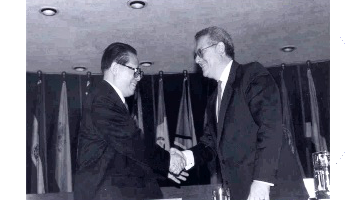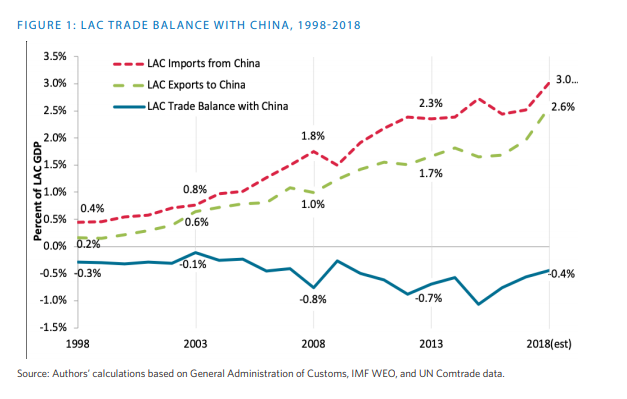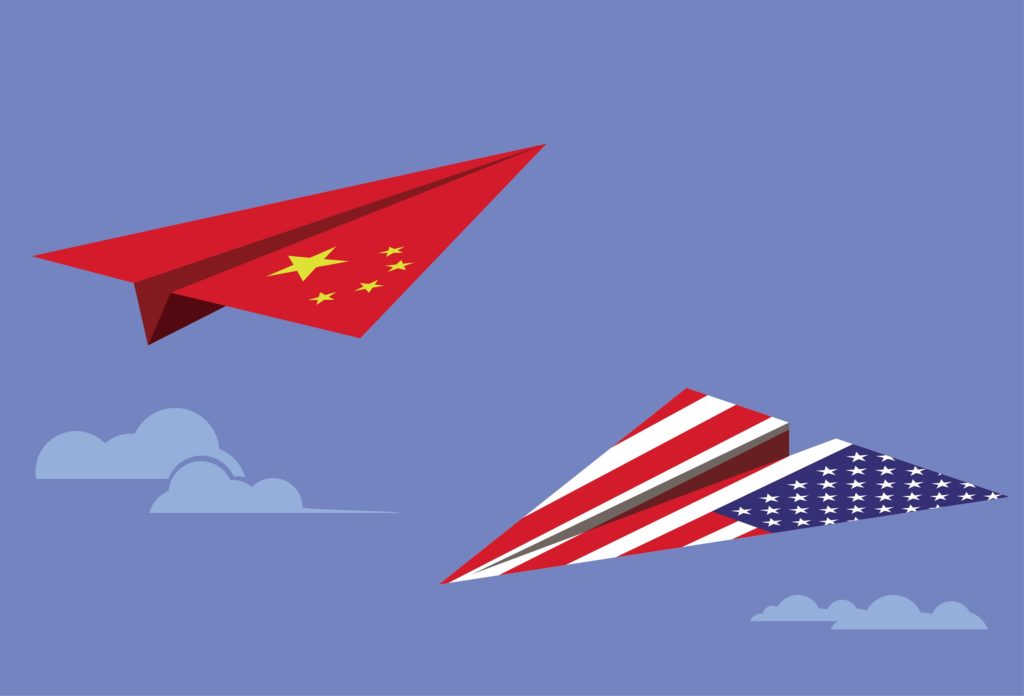As China and Latin America countries (LAC) continue to deepen their ties through investment projects as well as deepen political ties with China’s older regional partners, such as Brazil and Venezuela, the political leaders in the United States have expressed their concerns. Secretary Mike Pompeo shared his concerns on China’s policies in the Western Hemisphere during his visits to Chile, Paraguay, and Peru. Pompeo “accused” the Chinese government of “aiding” in the economic collapse of Venezuela. Chinese Foreign Ministry spokesman, Lu Kang, responded to these claims by stating that “for a long time, the United States has regarded Latin America as its own backyard, and pressured, threatened and even toppled other countries’ political regimes.”
Kang’s response is reflective of not only a change in how China views Latin America, but also how it represents the shift in the role and presence of the United States in Latin America. The Chinese have been vocal in their desires to continue to strengthen its relationship with Latin America, outlining its “commitment” in its 2016 white paper on Latin America and the Caribbean. China’s commitment presented Latin American countries the opportunity of “mutual trust” and “win-win cooperation” which was rarely seen between the United States and Latin America. Former-Panamanian President, Juan Carlos Varela, responded to U.S. criticisms of Chinese engagement in Latin America by asking for respect for their sovereignty of its country’s decision in “strengthening bilateral relations” just as they also respect the United States in doing so.
Separating China from the Western Hemisphere will not be successful for the United States if this is its goal. Latin America seeks to deepen its relationship with China even if it means challenging the United States’ desires for the region. El Salvador reached its first anniversary of establishing ties with China, with the President of El Salvador, Nayib Buekele stating, “today we have diplomatic relations with China, they are complete, they are established.” This marks a shift on the part of the current Salvadoran President, who criticized former-President Salvador Sánchez Cerén’s decision in establishing ties with China before entering office.
The relationship is not new, but shifting…
The United States’ concerns about China’s growing interest in Latin America can be traced back to the 1990s. “Concerns surfaced around 1998 about Hong Kong firm Hutchinson Whampoa running the ports on either end of the Panama Canal” and was reflected in the monitoring of Chinese billionaire Wang Jing’s travels to Nicaragua in 2013. The initial industries of interest between China and Latin American countries were focused on energy, such as oil, and raw materials. Isabel Hilton considers the visit by former-Chinese president, Jiang Zemin, who visited the Western Hemisphere in 2001, as a pivotal moment when China started being more active in the region. “By 2010, China…became the largest trading partner of South America, as well as the largest investor in the region.”

“President Jiang Zemin of the People’s Republic of China meeting with ECLAC’s Executive Secretary, Mr. Jose A. Ocampo, during his visit to [Economic Commission of LAC] on 6 April 2001. The Chinese President delivered an address to Latin America during his visit to ECLAC on the subject of ‘Let us work together for a new era of friendly cooperation between China, Latin America and the Caribbean.’” Photo from UN.org.
According at LAC-China trade balance statistics, while LAC shows a trade deficit with China, there still has been significant growth in trade between the two regions this past year. Rebecca Raya and Kehan Wang state that while 2018 saw a higher trade deficit compared to 2009, what has narrowed this deficit of late has been a “commodity price rebound“, where crude oil, accounting for 19.1% of LAC-China exports, had a 36% price increase. With these shocks, we can still see trade between LAC and China continuing its upward trend.

The relationship between LAC and China has also gone through a period of diversification. China has taken on transport infrastructure projects. The Inter-American Dialogue’s Asia and Latin America program has developed a database of the road, port, rail, and other transport infrastructure projects that has received Chinese financial support. Since 2002, there have been 150 projects that China has invested in, with half of these projects having started construction in LAC. Chinese companies have been successful in negotiating port deals or invest in existing port facilities. For instance, COSCO, a Chinese shipping firm, acquired two ports in Brazil in 2014 and 2015.

China’s ‘win-win’ strategy has also prompted it to deepen its relationship with LAC. Chinese Foreign Minister Wang Yi stated at the Community of Latin American and Caribbean States (CELAC) Forum in January 2018 that “China will always stay committed to the path of peaceful development and the win-win strategy of opening up and stands ready to share development dividends with all countries.” What Wang promised LAC is the opportunity to continue working together in a way such that both regions could profit by maintaining their relationship. With China gaining support from LAC for its Belt and Road Initiative (BRI), 15 countries in LAC have signed BRI-related MOUs, signaling LAC’s continuing desire to work with China.
Recommendations for the United States
China had made mention of “trilateral cooperation” between LAC and other countries in the region in its 2016 white paper on Latin America, The U.S. would not be taking on a new stance in supporting Chinese investment in LAC. In 2010, former-U.S. Assistant Secretary of State for Western Hemisphere Affairs, Arturo Valenzuela, stated that Chinese engagement and investment “helps strengthen the economies and provide employment for people in these countries.” During the Bush and Obama administrations, there have been several bilateral talks between China, LAC, and the U.S. During these talks, the U.S. pushed for more transparency from China in its business practices in the region. However, the negative rhetoric from the Trump administration has spurred LAC and China to further integrate with each other.
The U.S. should also view LAC similarly as China does -as a region of potential both economically and politically. China in its 2016 white paper on LAC described the region as “a land of vitality and hope,” and has continued to be vocal on how it views LAC as vital members of the developing world. When considering the future of LAC, the U.S. can focus its support to LAC by bettering democratic governance and strengthening institutions. In addition it should promote LAC growth by laying the “groundwork” of a supportive development role in too.
The U.S. needs to reconsider its stance towards dividing LAC from China. The new president-elect of El Salvador, Nayib Bukele, was critical of the previous Cerén administration severing ties with Taiwan and has received pressure from the United States to reconsider the decision to establish ties with Beijing. However, as Margaret Meyers, the director of the Asia and Latin America Program at the Inter-American Dialogue stated, “the ways countries are engaging with China might change slightly, but the fundamentals of their bilateral relations with China will withstand political changes.” Similarly, President Jair Bolsonaro of Brazil was critical of China during his campaign, yet the prospects of Chinese funding for infrastructure projects and soy trade between the countries has allowed China to continue interacting with Brazil, especially as the trade dispute between the U.S. and China thickens.
Nataly Cruz-Castillo is a research assistant at ICAS and a M.A. candidate in International Economic Relations at American University’s School of International Service




